
|
Astronomy Picture Of the Day (APOD)
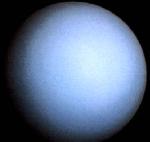 Uranus: The Tilted Planet
Uranus: The Tilted Planet
14.11.1997
Uranus is the third largest planet after Jupiter and Saturn. This picture was snapped by the Voyager 2 spacecraft in 1986 - the only spacecraft ever to visit Uranus. Uranus has many moons and a ring system. Uranus is composed mostly of rock and ices, but with a thick hydrogen and helium atmosphere.
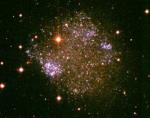 Irregular Galaxy Sextans A
Irregular Galaxy Sextans A
13.11.1997
Grand spiral galaxies often seem to get all the glory. Their newly formed, bright, blue star clusters found along beautiful, symmetric spiral arms are guaranteed to attract attention. But small irregular galaxies form stars too, like this lovely, gumdrop-shaped galaxy, Sextans A.
 Mars: A Sheer Close Up
Mars: A Sheer Close Up
12.11.1997
As the Mars Global Surveyor spacecraft maneuvers toward its final mapping orbit, its cameras have been producing some sharp views of Mars. At a resolution of better than 30 feet per pixel, this image...
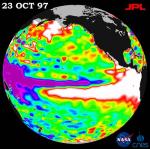 El Nino Earth
El Nino Earth
11.11.1997
El Niño is a temporary global climate change resulting from unusually warm water in the central Pacific Ocean. El Niño can cause unusual or severe weather for some locations over the next few months.
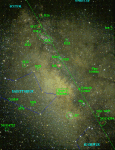 The Annotated Galactic Center
The Annotated Galactic Center
10.11.1997
The sky toward the center of our Galaxy is filled with a wide variety of celestial wonders. Most are visible with only binoculars. Constellations of nearby stars include Sagittarius, Libra, Scorpius, Scutum, and Ophiuchus. Nebulae include Messier Objects M8, M16, M17, M20 and the Pipe Nebula.
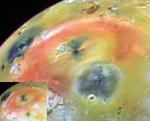 Dark Volcano Active on Io
Dark Volcano Active on Io
9.11.1997
The surface of Io is changing even as we watch. The inset frame of Jupiter's most active moon was taken by the robot spacecraft Galileo in April. Just last month the larger image was taken. The new large black spot reveals that a volcano named Pillan Patera has been erupting during the interim.
 Surveyor Slides
Surveyor Slides
8.11.1997
"Safe!" In September 1967 (during regular season play), the Surveyor 5 lander actually slid several feet while making a successful soft landing on the Moon's Mare Tranquillitatis. Equipped with television cameras and soil...
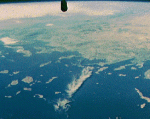 Aristarchus' Unbelievable Discoveries
Aristarchus' Unbelievable Discoveries
7.11.1997
Here lived one of the greatest thinkers in human history. Aristarchus lived on the Greek island of Samos, a small island in the center of the above picture that can be identified with a good map.
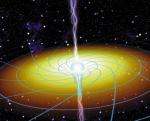 Evidence for Frame Dragging Black Holes
Evidence for Frame Dragging Black Holes
6.11.1997
Gravity can do more than floor you. According to recent measurements of a star system thought to contain a black hole, it can spin you too. This effect, called frame-dragging, is most prominent near massive, fast spinning objects. Now, a team led by W.
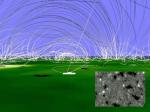 The Magnetic Carpet Of The Sun
The Magnetic Carpet Of The Sun
5.11.1997
The Sun has a magnetic carpet. Its visible surface appears to be carpeted with tens of thousands of magnetic north and south poles joined by looping field lines which extend outward into the Solar Corona.
|
January February March April May June July August September October November December |
|||||||||||||||||||||||||||||||||||||||||||||||||